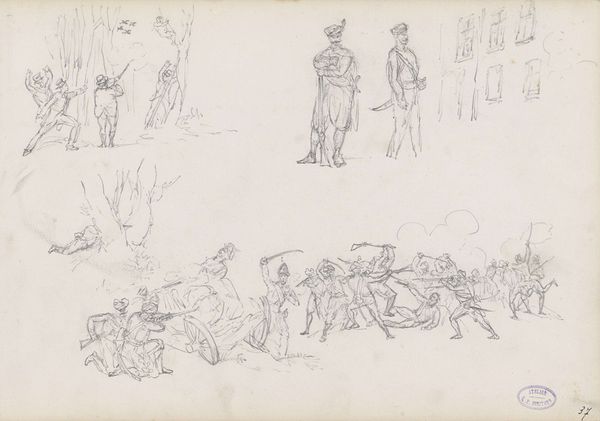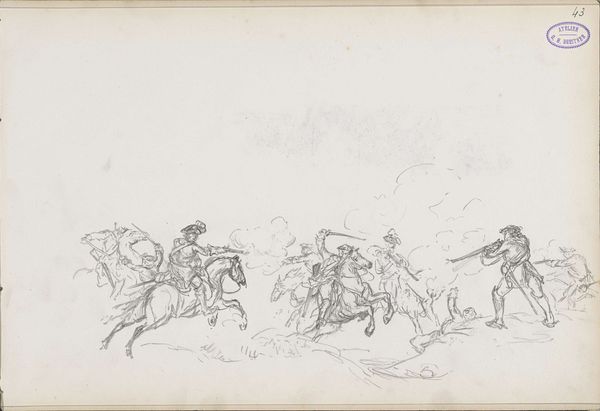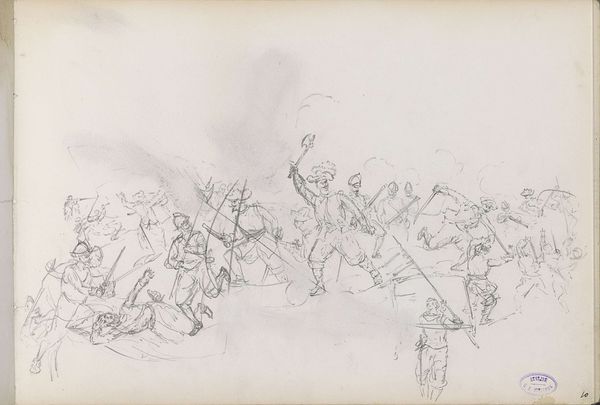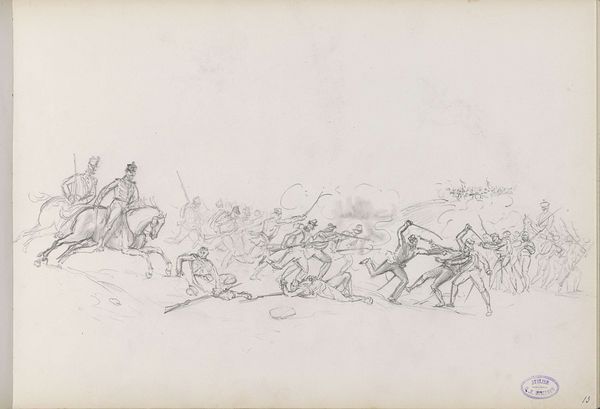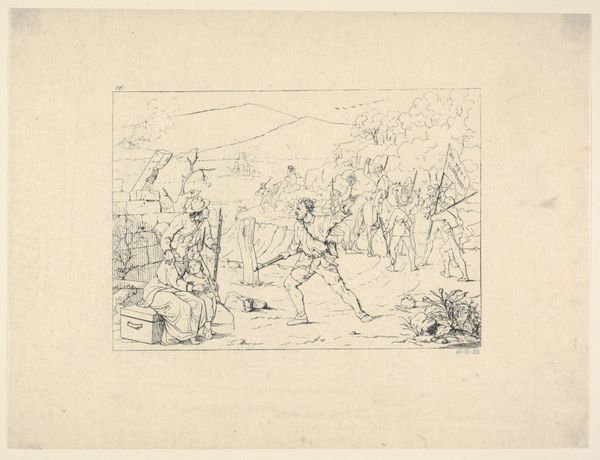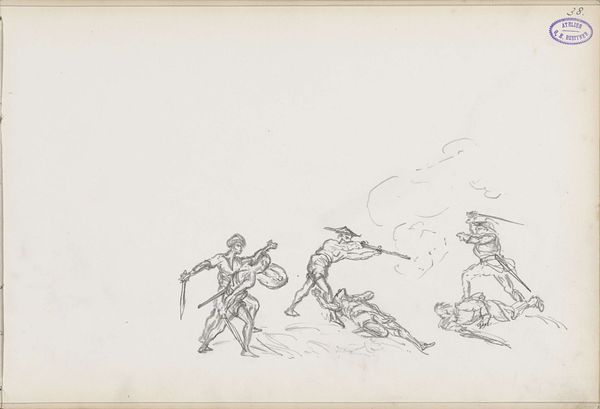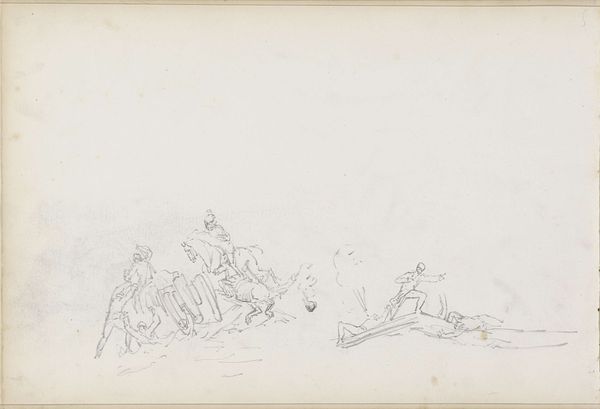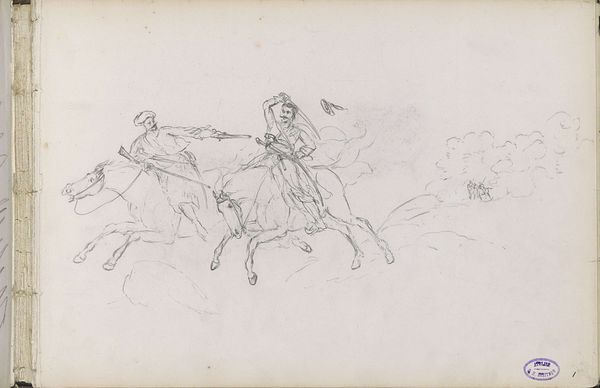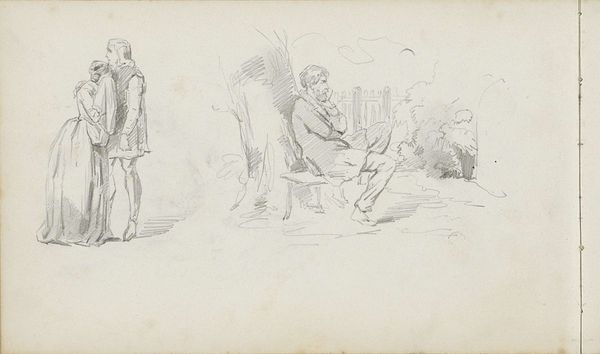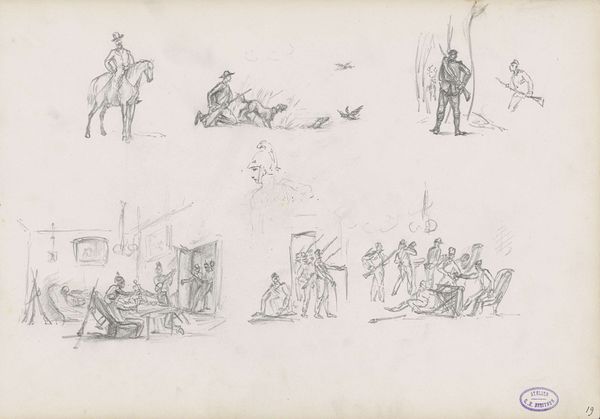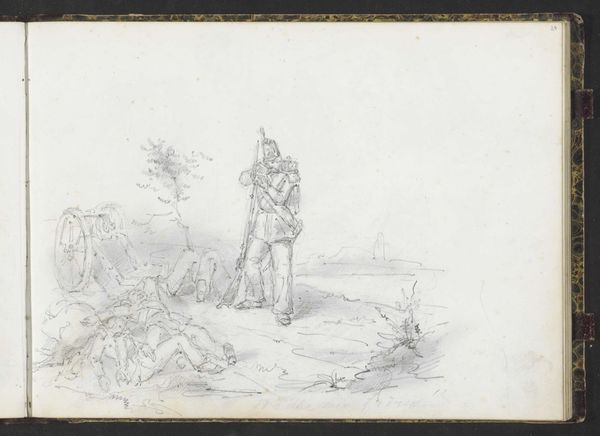
Copyright: Rijks Museum: Open Domain
Curator: Let’s take a look at this drawing by George Hendrik Breitner, dating from 1873. It's titled "Vechtende soldaten en een echtpaar met een hond," which translates to "Fighting Soldiers and a Couple with a Dog." It resides here at the Rijksmuseum. What strikes you immediately about this piece? Editor: It's the stark contrast that jumps out. The brutality of the battling soldiers in the lower register, countered by the apparent indifference of the bourgeois couple and their dog in the upper left. The spatial separation only heightens the emotional dissonance. Curator: Exactly. Breitner often focused on depicting the working class and everyday life in Amsterdam, so this piece, rendered in pencil, offers a glimpse into his process. You can see the very tangible layering and strokes in the sketch and understand the economic value assigned to sketching over say, paint on canvas, during this era. The use of such rudimentary materials to evoke a scene so turbulent is really significant. Editor: And within that contrast, consider the loaded symbols. Soldiers locked in combat – representatives of power, conflict, and perhaps national identity in the making – rendered near lifeless bodies; while above them, the couple embodies domesticity, comfort, and detachment, visually reinforcing social hierarchies and potentially class anxieties. Their small dog can be seen as a marker of privilege or frivolous consumerism while carnage ensues on another plane. Curator: Indeed. Looking at the means of production here also exposes those divides; the rawness of the pencil emphasizes the immediate record, a snapshot that lacks refinement and reflects, perhaps, a quick capturing of a harsh reality. A completed oil painting might distance viewers, glamorize such fighting, while this almost forces an intimacy with its quick and crude method. Editor: Furthermore, it is that apparent lack of finish which gives the artwork its tension; consider how memory operates: incomplete fragments that require the viewer to actively construct a more complete scene. Note how, compositionally, the negative space separating these two groups encourages viewers to examine our own responses to each element. Is there an association here with say, patriotism or the human cost of nation building? Curator: Certainly. Ultimately, this work encourages viewers to ask themselves questions about whose stories are visible and valued in this period and consider ways those very stories come into being. Editor: And from a symbolic standpoint, it prompts us to question what remains unacknowledged or unseen, the silent narratives coexisting within a single frame – a sketch – itself both record and creation.
Comments
No comments
Be the first to comment and join the conversation on the ultimate creative platform.
